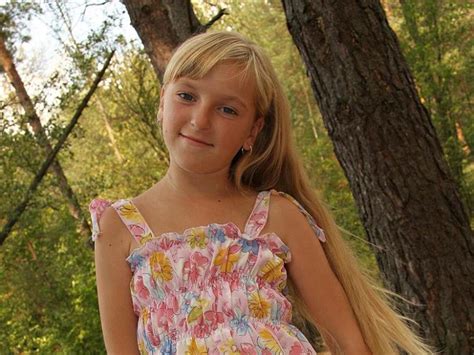Art Modeling: A Comprehensive Guide to Capturing the Human Form
In the realm of art, the human form has been an enduring source of inspiration and subject matter. Art modeling, the practice of using live models to create artistic representations, plays a crucial role in capturing the intricacies and beauty of the human body. This comprehensive guide will delve into the world of art modeling, providing invaluable insights for artists, models, and art enthusiasts alike.
Understanding the Significance of Art Modeling
Art modeling serves as a fundamental tool for artists to study and depict the human anatomy. It enables them to observe and interpret the nuances of human movement, posture, and expression, culminating in artworks that are anatomically accurate, visually captivating, and emotionally resonant.
Benefits of Art Modeling
Engaging in art modeling offers numerous benefits, both for artists and models.

Benefits for Artists:

-
Enhanced anatomical understanding: Direct observation of live models provides artists with an intimate knowledge of the human body's form and function.
-
Improved observational skills: Art modeling trains artists to hone their ability to perceive and accurately capture subtle details and gestures.
-
Development of technical proficiency: Working with models allows artists to experiment with different techniques, materials, and perspectives, enhancing their technical skills.
Benefits for Models:
-
Artistic contribution: Models play a vital role in the creation of art, collaborating with artists to bring their vision to life.
-
Self-expression: Art modeling provides a platform for models to express their own creativity and individuality.
-
Personal growth: Participating in art modeling sessions can foster confidence, self-awareness, and a deep appreciation for the human form.
Step-by-Step Approach to Art Modeling
For Artists:

-
Identify the Purpose: Determine the specific objectives of the modeling session, whether it's studying a particular pose, gesture, or capturing a specific emotion.
-
Find a Suitable Model: Choose a model who possesses the desired physical characteristics and is comfortable with the session's requirements.
-
Establish Communication: Clearly communicate your expectations to the model and establish a comfortable working environment.
-
Set Up the Workspace: Create a well-lit and ergonomic workspace that promotes both creativity and comfort.
-
Take Time to Observe: Begin by carefully observing the model, paying attention to their proportions, gestures, and expressions.
-
Render the Form: Using your chosen medium, start sketching or painting the model, capturing their essence and anatomical accuracy.
-
Critique and Refine: Step back and critically assess your work, making adjustments as necessary to enhance the accuracy and impact of your representation.
For Models:
-
Familiarize Yourself with the Project: Understand the artist's goals and the specific requirements of the modeling session.
-
Prepare Yourself: Ensure you are well-rested and have eaten beforehand. Dress appropriately for the session, considering both comfort and the artist's needs.
-
Communicate Effectively: Listen attentively to the artist's instructions and provide feedback when necessary.
-
Maintain Poses: Hold poses steadily, avoiding sudden movements or distractions. Respect the artist's time and help create a productive work environment.
-
Provide Feedback: If applicable, offer suggestions and insights to the artist to enhance the artwork's accuracy and emotional impact.
-
Self-Care: Take breaks when needed and prioritize your own well-being throughout the session.
Common Mistakes to Avoid
Artists:
-
Overlooking the Basics: Failing to establish a solid foundation in human anatomy can lead to inaccuracies in artistic representations.
-
Neglecting the Model's Comfort: Disregarding the model's well-being can create an uncomfortable and unproductive work environment.
-
Rushing the Process: Attempting to capture the model's likeness too quickly can result in rushed and inaccurate sketches or paintings.
Models:

-
Hesitation: Being hesitant or uncomfortable posing can hinder the artist's ability to accurately capture the desired form.
-
Lack of Communication: Failing to communicate with the artist effectively can lead to misunderstandings and dissatisfaction with the end result.
-
Forgetting Self-Care: Neglecting one's own needs during a modeling session can compromise performance and overall well-being.
Why Art Modeling Matters
-
Preservation of Artistic Knowledge: Art modeling has played a key role in passing on artistic techniques and knowledge throughout history.
-
Inspiration for Creativity: Studying live models enables artists to draw inspiration from the beauty and diversity of the human form.
-
Cultural Significance: Art modeling has been integral to various cultures worldwide, reflecting social values and aesthetic ideals.
Conclusion
Art modeling is an essential aspect of the art-making process, providing artists with invaluable insights into the human body and facilitating the creation of captivating and authentic artworks. By embracing the principles outlined in this guide, artists and models can collaborate effectively, fostering a mutually beneficial and fulfilling experience. As a result, the world of art is enriched with the beauty and wonder of the human form, captured through the skilled hands of artists and the expressive bodies of models.
Additional Information
Table 1: Estimated Number of Art Models Worldwide
| Region |
Estimated Number of Art Models |
| Asia |
1,500,000 |
| Europe |
750,000 |
| North America |
500,000 |
| South America |
250,000 |
| Africa |
100,000 |
| Oceania |
50,000 |
(Source: International Federation of Artists' Houses)
Table 2: Average Hourly Rates for Art Models
| Country |
Average Hourly Rate |
| United States |
$20-$50 |
| United Kingdom |
£15-£30 |
| Canada |
$15-$35 |
| Australia |
$20-$40 |
| France |
€15-£30 |
(Source: Art Model Guild)
Table 3: Common Types of Art Modeling
| Type |
Description |
| Life Drawing |
Modeling for sketches and drawings |
| Sculpture |
Modeling for statues and sculptures |
| Painting |
Modeling for oil, acrylic, or watercolor paintings |
| Photography |
Modeling for photographic artwork |
| Fashion |
Modeling for fashion sketches, clothing design, and advertising campaigns |
